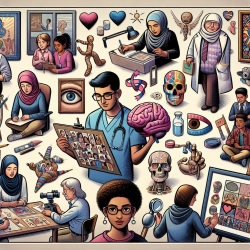At TinyEYE, we are dedicated to creating the best outcomes for children through our online therapy services. A recent study, "Evaluation of two communication tools, slideshow and theater, to improve participants’ understanding of a clinical trial in the informed consent procedure on Pemba Island, Tanzania," provides valuable insights that can help practitioners improve their skills and ensure better understanding among participants in clinical trials. Here, we delve into the study's findings and explore how these can be applied in our practice.
The Importance of Effective Communication in Clinical Trials
Clinical trials often involve complex procedures and require participants to have a thorough understanding of the trial's objectives, benefits, risks, and their rights. This is particularly challenging in settings with low literacy and health literacy levels. The study conducted on Pemba Island, Tanzania, investigated the effectiveness of different communication tools in enhancing participants' understanding of clinical trials.
Key Findings from the Study
The study compared the effectiveness of a verbal information session (IS) alone, IS with a slideshow, and IS followed by a theater performance in improving caregivers' understanding of a clinical trial. The key findings were:
- Caregivers who attended the verbal IS alone had significantly better understanding compared to those who only received an informed consent form (ICF).
- Adding a slideshow or theater to the IS did not significantly improve understanding beyond the IS alone.
- Three out of ten key messages remained largely misunderstood, regardless of the mode of information.
Implications for Practitioners
For practitioners, these findings underscore the importance of verbal communication in ensuring participants' understanding of clinical trials. Here are some practical steps that can be implemented based on the study's outcomes:
1. Prioritize Verbal Information Sessions
Given that verbal IS significantly improved understanding, practitioners should prioritize conducting thorough verbal information sessions. This can be particularly effective in settings with low literacy levels.
2. Simplify Key Messages
Despite the use of verbal IS, some key messages were still misunderstood. Practitioners should focus on simplifying these messages and ensuring they are conveyed clearly. Repeating key points and checking for understanding can help reinforce these messages.
3. Explore Alternative Methods
While the study found that slideshows and theater did not significantly enhance understanding, it is essential to explore other methods that might be more effective. For example, using videos or interactive tools could be beneficial. Future research should continue to investigate new communication methods.
Encouraging Further Research
As practitioners, staying informed about the latest research and continuously seeking ways to improve our communication methods is crucial. The study highlights the need for ongoing research to identify the most effective ways to convey complex information to participants, especially in diverse settings.
To read the original research paper, please follow this link: Evaluation of two communication tools, slideshow and theater, to improve participants’ understanding of a clinical trial in the informed consent procedure on Pemba Island, Tanzania.










